Gilroy Gardens: The Most Thrilling Way to Learn About California Produce + Plants
Ever been to Gilroy Gardens? Learning about California Grown fruits, vegetables and plants has never been more fun!
There’s no denying that people love a good amusement park. In fact, every year almost 17 MILLION people from all around the world visit a certain California theme park – not naming any names here but think “mouse ears”. If you’re looking for an alternative to jam-packed, commercialized parks, we have just the thing – combining the thrill of family-friendly rides, incredible landscapes and an introduction to California’s rich agricultural history – for a fraction of the price! Gilroy Gardens is our go-to for good, clean family fun, with a touch of ag education snuck in on the side.
What is Gilroy Gardens?

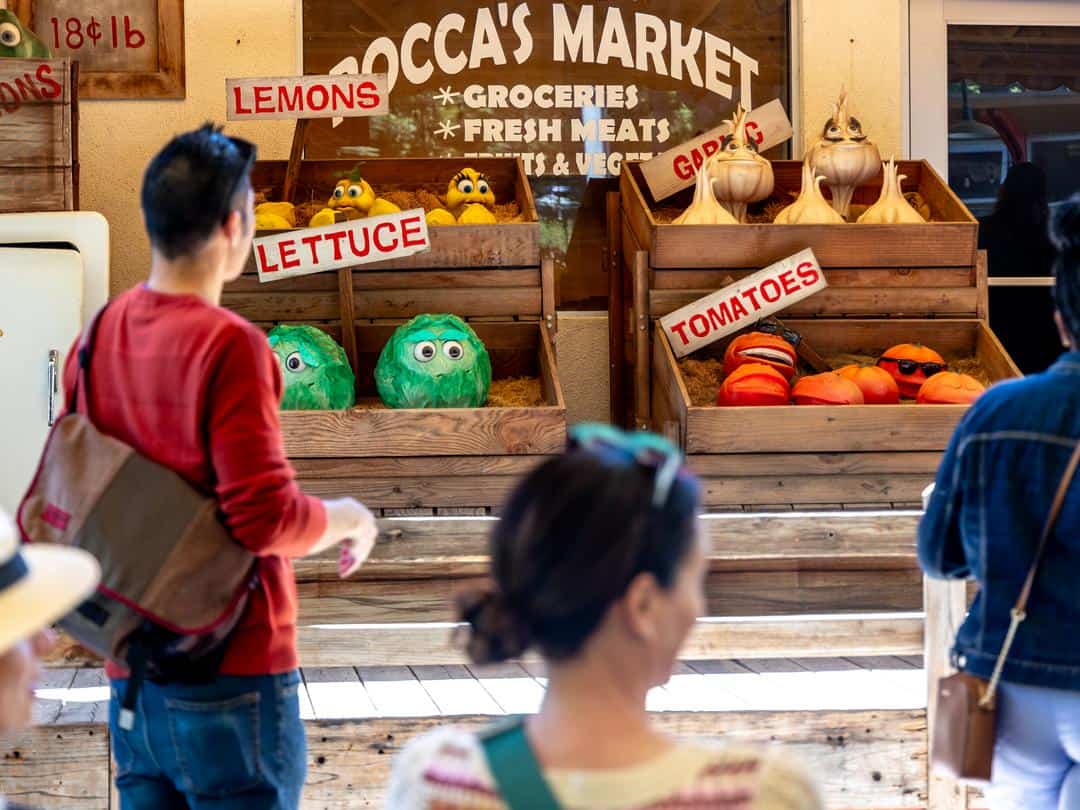

Never heard of Gilroy Gardens? It’s a little newer to the scene than California staples like the Boardwalk, Six Flags or even SeaWorld. Gilroy Gardens opened to the public on June 15, 2001. First called Bonfante Gardens Theme Park, after founder Michael Bonafante, the park grew out of Michael’s search for a way to share his love of trees and nature with others. He wanted to create a space that was both educational and inspirational – but realized that trees in and of themselves (even his amazing grafted specimen trees) wouldn’t necessarily attract a crowd.

After some serious research, Michael realized that building an amusement park was the best way to lure people into learning more about his beloved trees – and the many fruits and vegetables that thrive in the surrounding areas. So, Michael curated a collection of rides that weren’t just thrilling, but also educational.
Many of the most popular rides, like the Garlic Twirl and Artichoke Dip, pay homage to some of the crops that the surrounding region is famous for. *
*If you’re new around here, you might not already know that Gilroy is considered the Garlic Capital of the World, while nearby Castroville grows nearly all of the Nation’s artichokes.
Our favorite produce-themed rides at Gilroy Gardens
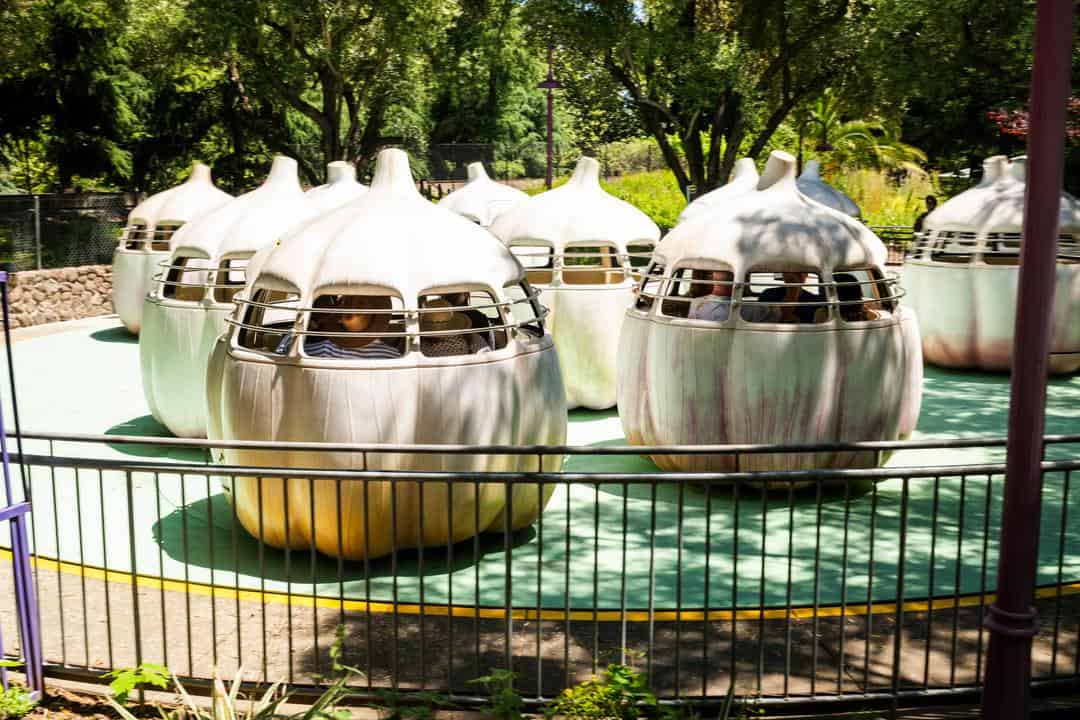
Garlic Twirl
Garlic is everywhere at Gilroy Gardens. It’s the official mascot, in the food (and air) – and even makes a star turn as a twirling, whirling ride!
Artichoke Dip
Garlic isn’t the only superstar at Gilroy Gardens. One of our favorite rides pays homage to the almost 8000 acres of artichokes that grow down the road. Children of all ages will enjoy spinning and swirling to their hearts’ content on the Artichoke Dip!

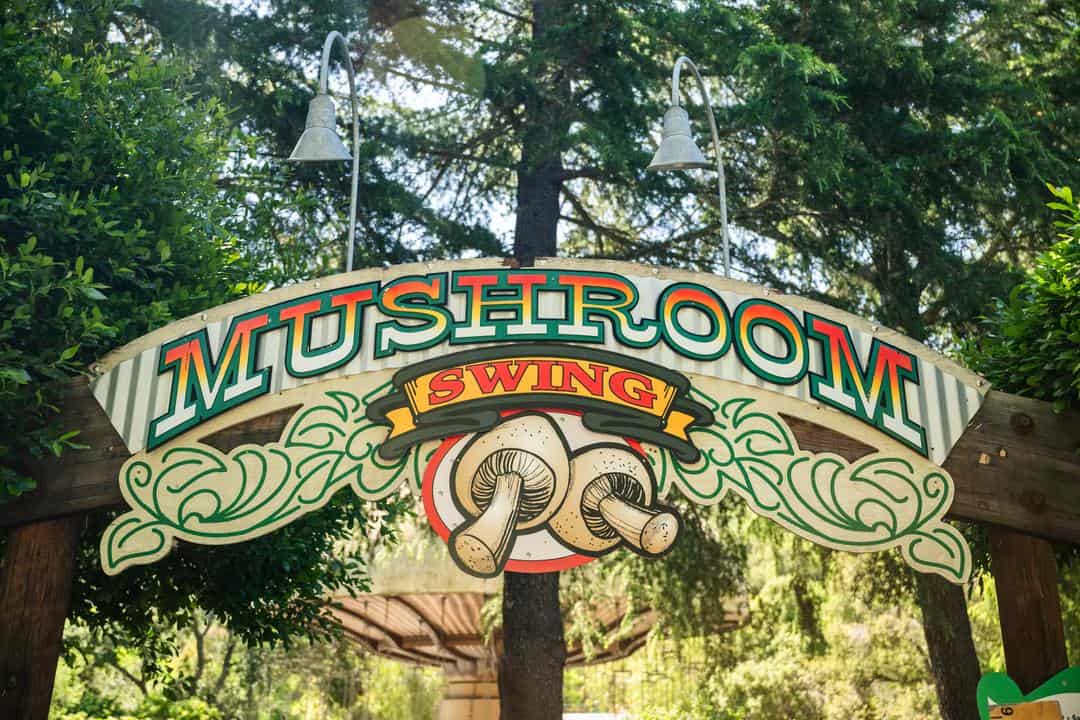
Mushroom Swings
Neighboring Monterey County is home to some of our favorite mushroom producers. On the Mushroom Swings at Gilroy Gardens, you’ll get an amazing aerial view of the park – and you might even feel like you’re high enough to catch a glimpse of the coast!
Apple and Worm
Did you know that the area surrounding Gilroy is studded with apple farms? This mellow ride is a favorite with littles but we prefer our apples without the worms, thank you very much.
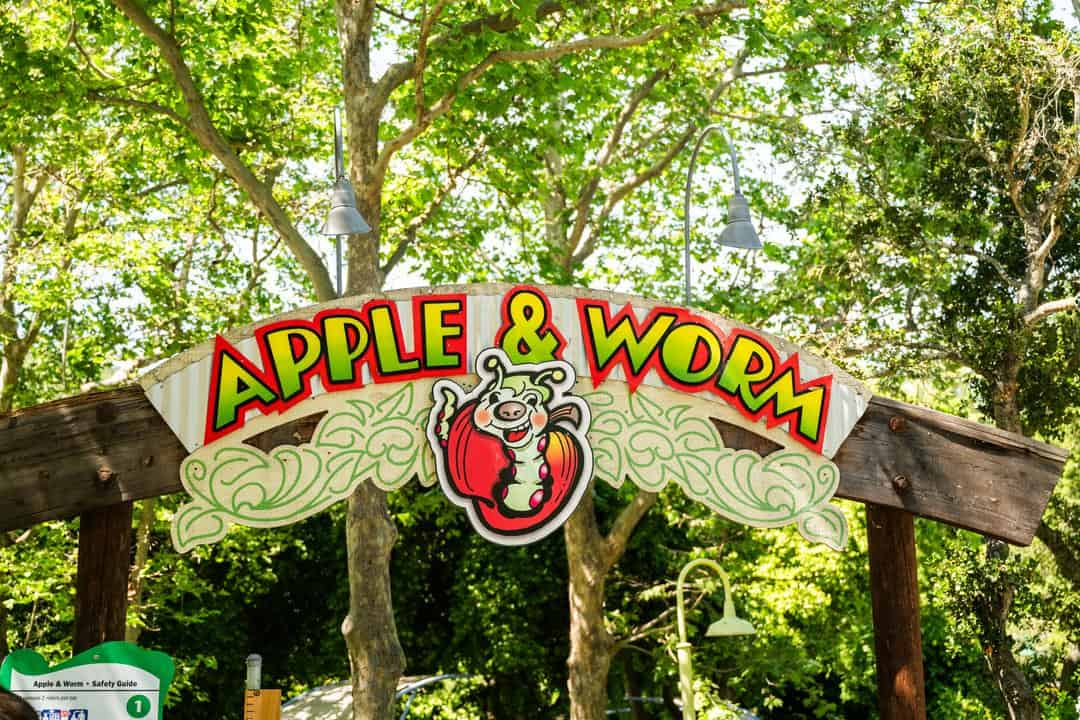
Strawberry Sunday
Sunday Funday! This gentle ride is a nod to the strawberry fields that flourish just miles away on the California coast.
The Circus Trees: the Art of Ornamental Grafting
The Circus Trees have become synonymous with Gilroy Gardens, appearing throughout the park and incorporated into the park’s logo. These works of horticultural art created by Axel Erlandson in the early 1900s, are nestled throughout the park.
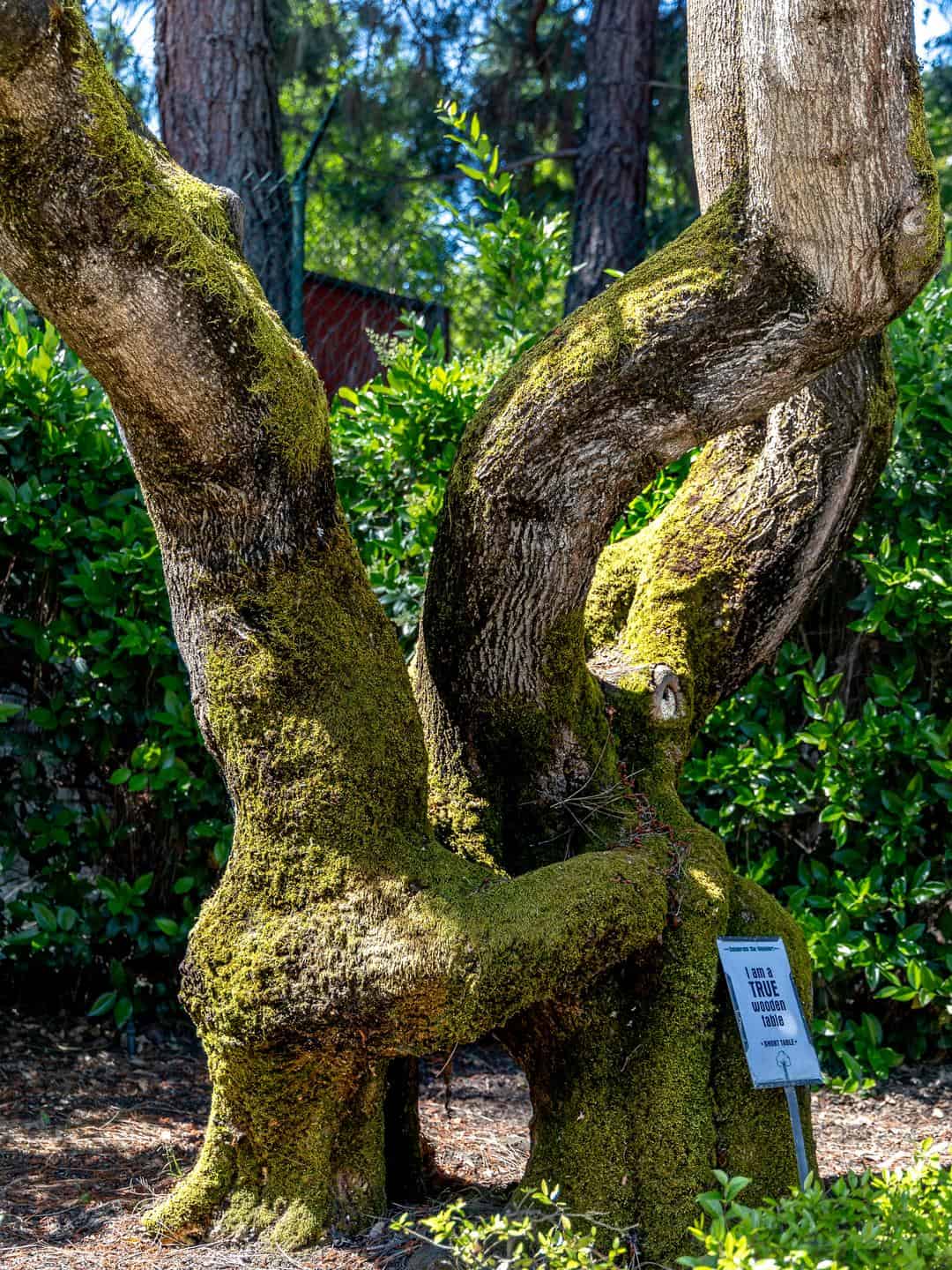
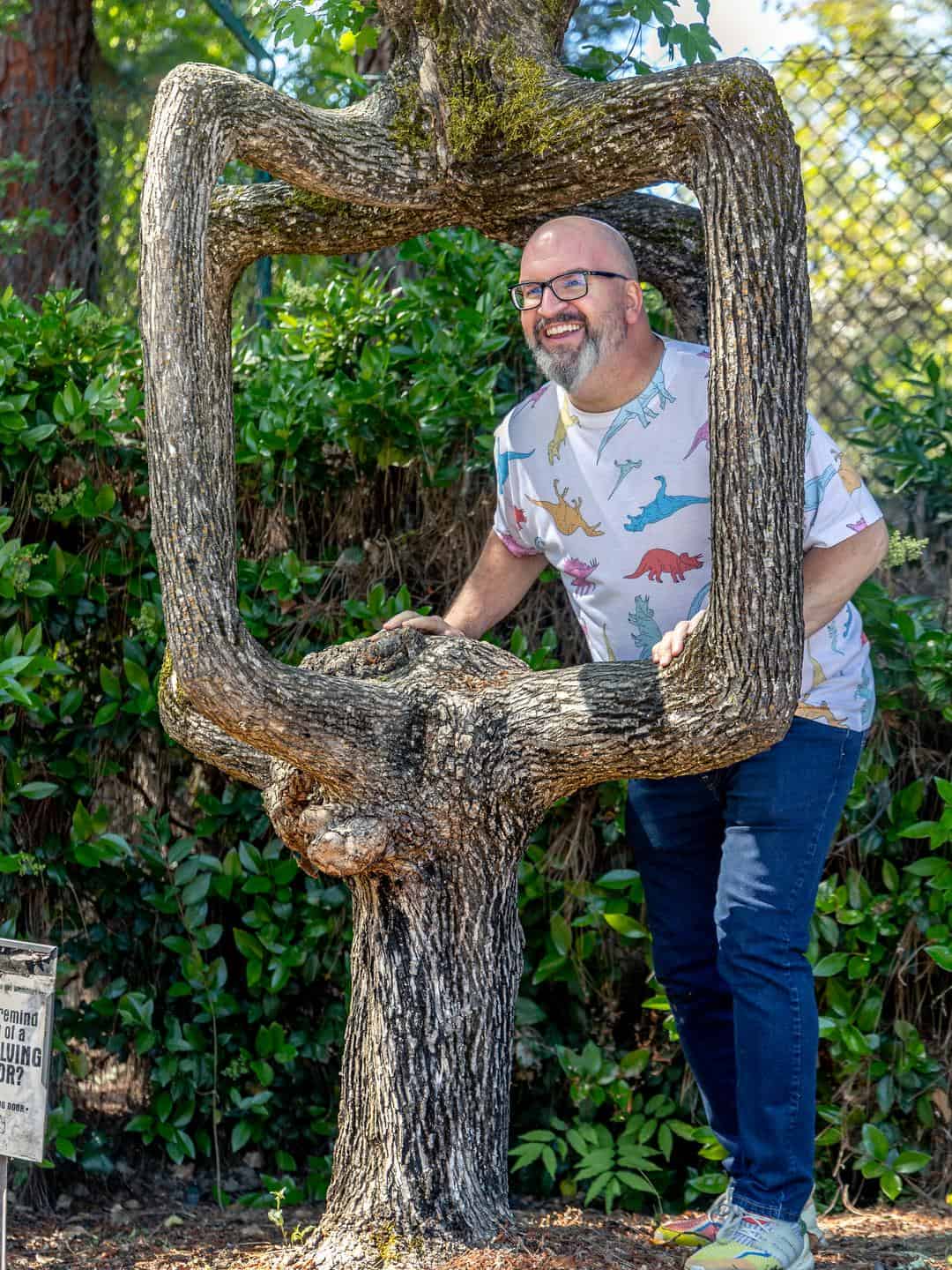


Like Michael Bonfante, Axel was fascinated by trees, particularly how they occasionally grafted together in nature. Axel was inspired and spent the next 40 years meticulously grafting his seventy “Circus Trees” to match his vision. Axel’s trees were highlighted in Ripley’s Believe it or Not and featured in LIFE magazine, but ultimately, his passion never yielded a profit. In 1984, twenty years after Axel’s death, Michael Bonfante discovered the circus trees. He purchased the remaining twenty-nine and successfully transplanted twenty-five of them in what would soon become Gilroy Gardens.
Why is grafting important in agriculture?
Grafting, the process that allowed Axel to create his incredible ornamental Circus Trees, is a process regularly used in agriculture. Grafting is the process of joining two different types of trees or vines together as one.
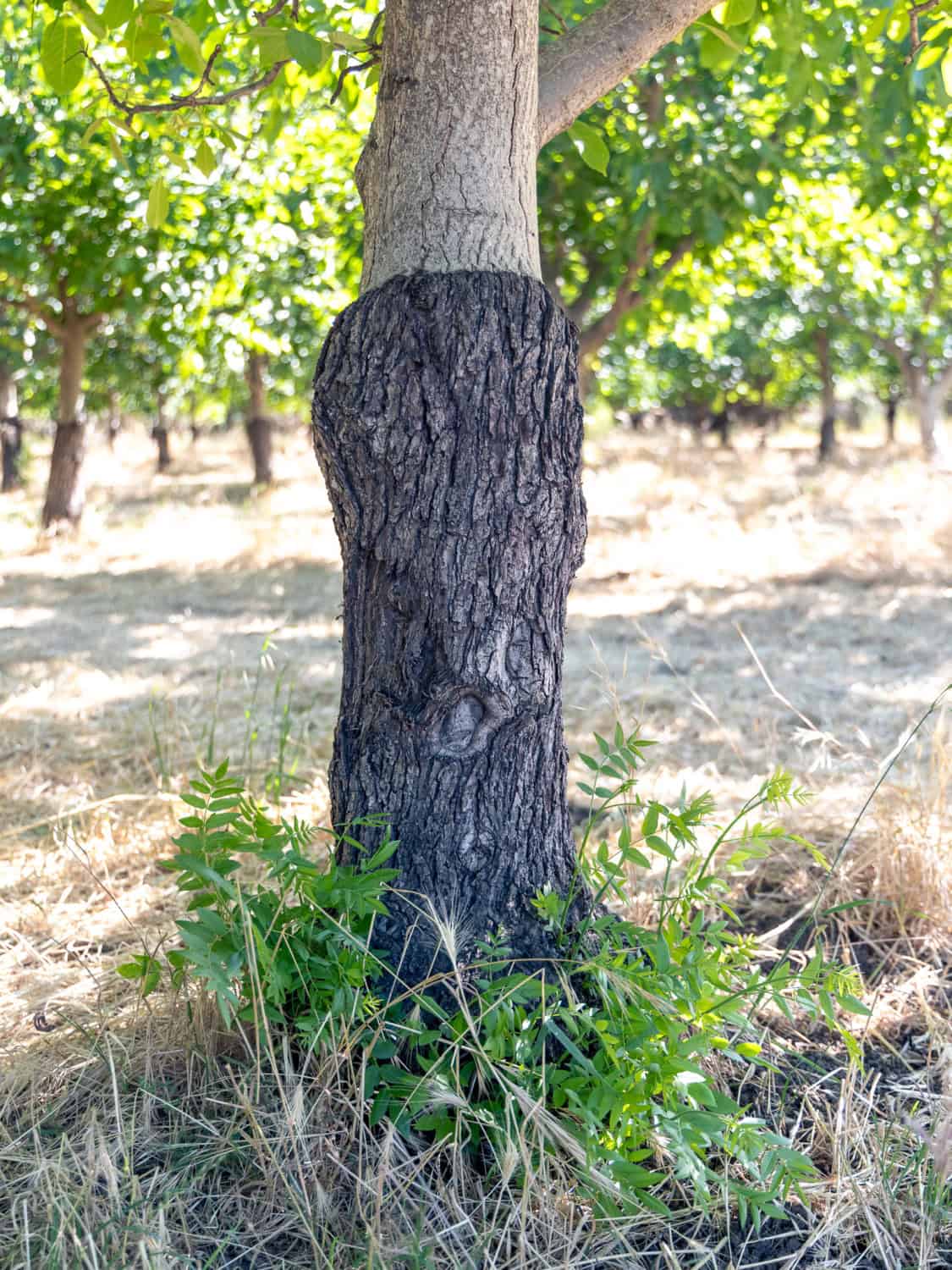
Farmers graft trees and vines together for several different reasons. For example, some almond growers graft their almonds onto peach tree rootstock to improve drought tolerance and disease resistance. Walnut growers graft more productive varieties onto native rootstock to increase yield. Apple and grape growers regularly graft newer, trendier varieties of fruit onto existing trees and vines to decrease the expense of planting new orchard or vineyard and reduce time to market, since new crops take at least 5-7 years to become productive. In contrast, farmers are typically able to harvest fruit from grafted trees and vines after only two years.
The Gardens: An Inspiration for Home Gardeners
In addition to the agriculture-themed, family-friendly rides and grafted Circus Trees, Michael established a collection of six beautiful gardens throughout the park to inspire home gardeners. These spectacular gardens send visitors home with ideas of how to recreate a similar garden in their spaces.
Holly Garden
The Holly Garden features unusual varieties of the eponymous plant.
South County Backroads Garden
The South County Backroads car ride sends guests back in time to explore a two-acre garden planted with many of the crops that were historically grown throughout the Santa Clara Valley like cherries, apricots and prunes.
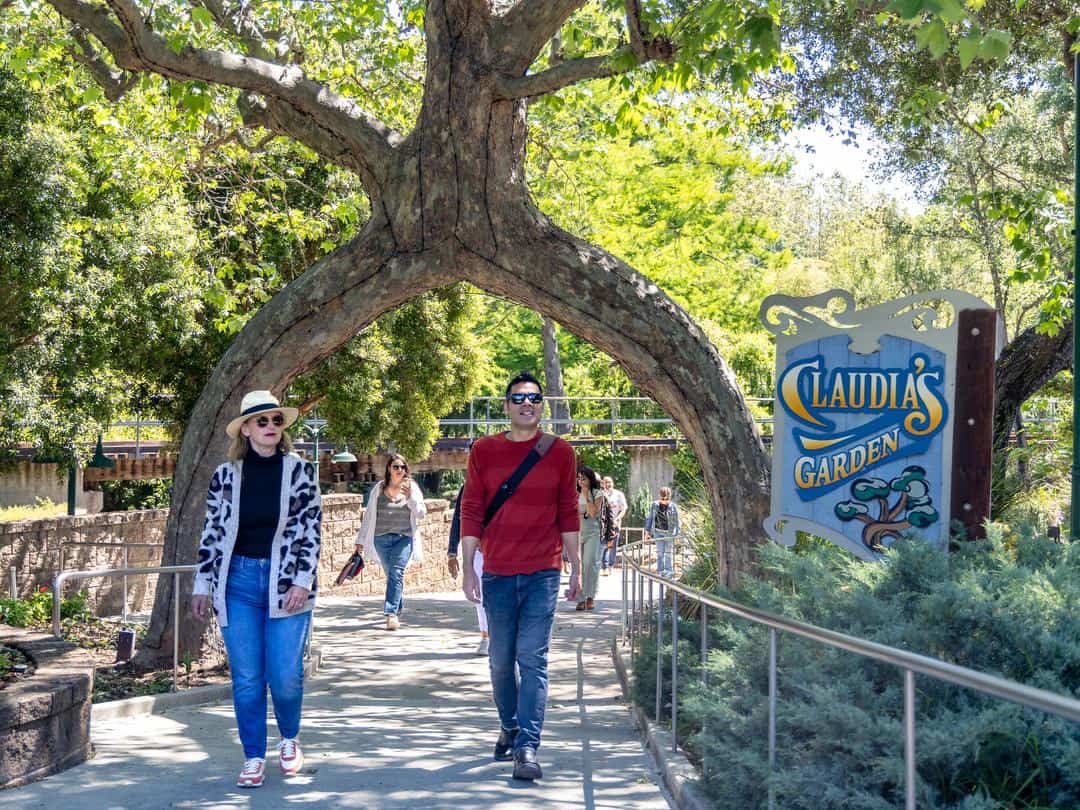
Claudia’s Garden
Claudia’s Garden is a lush oasis, replete with waterfalls, ferns and towering trees.
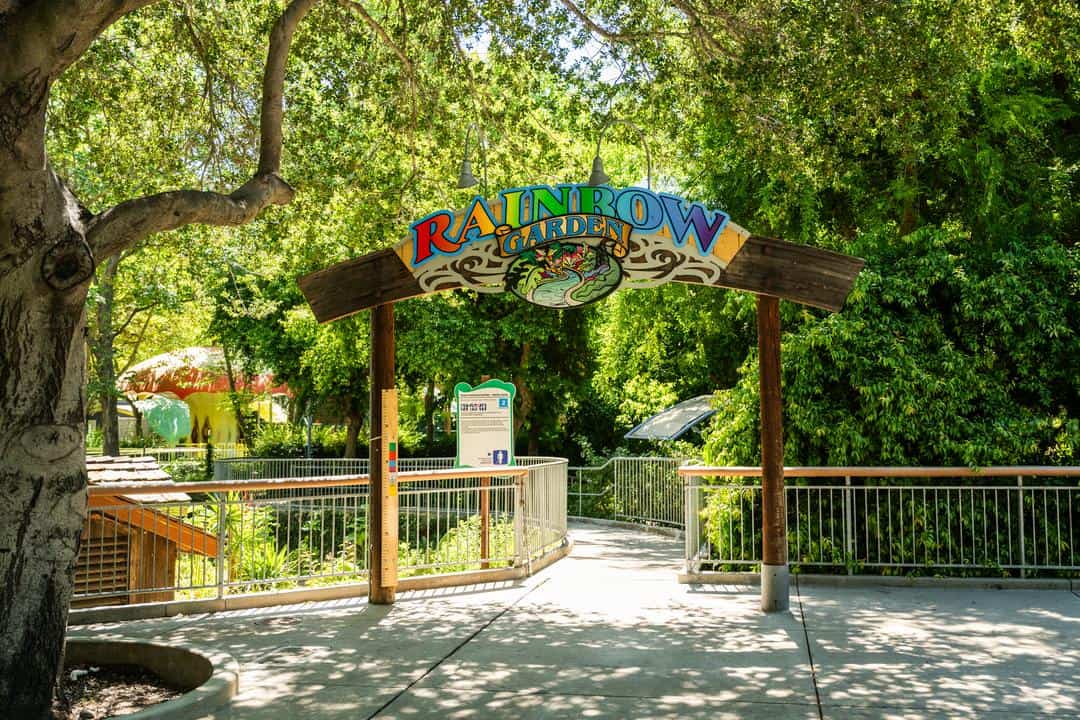
Rainbow Garden
The best way to enjoy the aptly-named Rainbow Garden is from the Rainbow Garden Boat Ride. While floating down a winding stream, guests are surrounded by colorful flowers and whimsical topiaries.
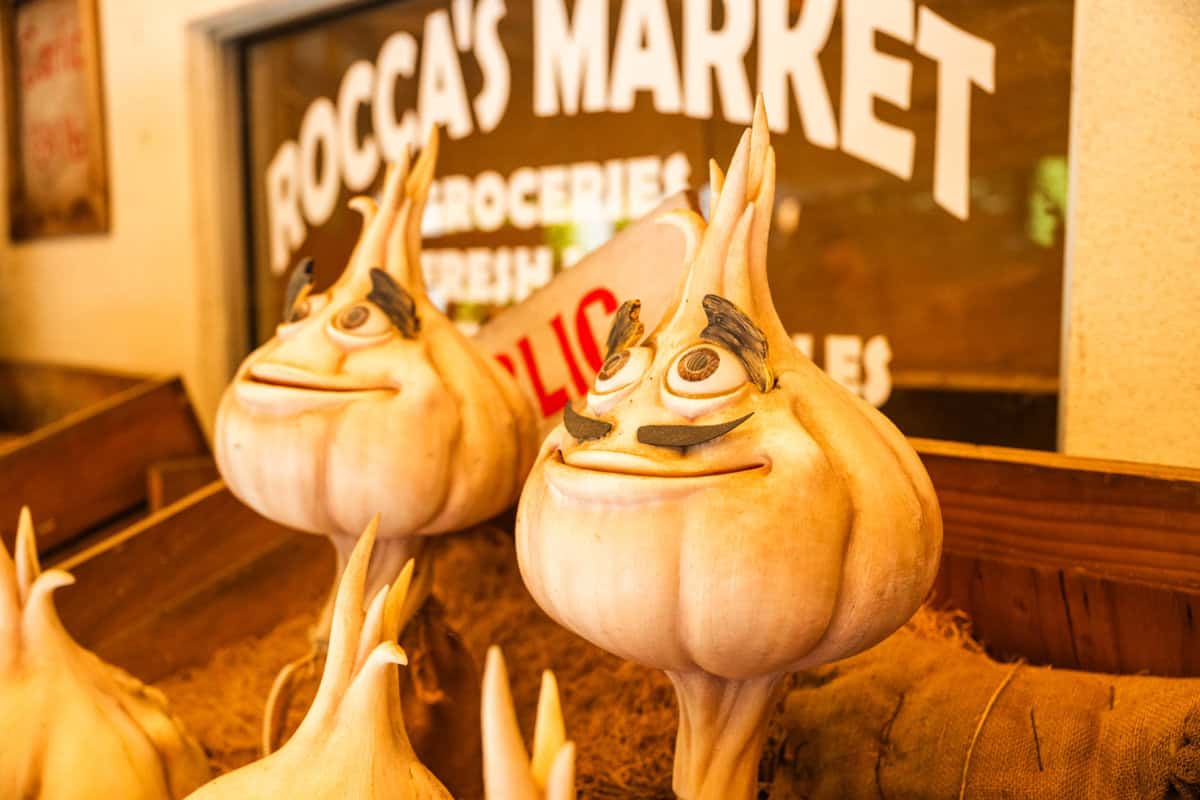
Camellia Garden
The Camellia Garden offers another excellent example of ornamental grafting. Gardeners carefully joined two different varieties of camellias together to extend bloom season. The garden is also home to the animatronic Musical Market Show, a fun way to teach kids about the importance of choosing healthy fruits and vegetables!
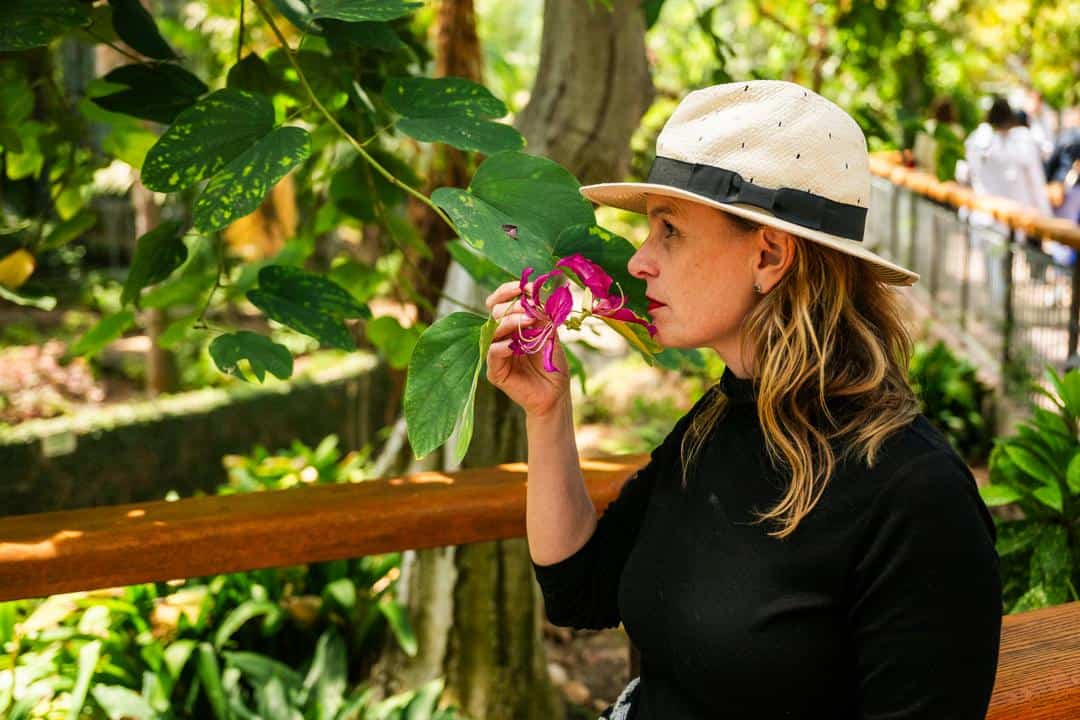
Monarch Garden
Housed in a 60-foot-tall greenhouse, this stunning pollinator garden introduces visitors to hundreds of unique tropical and subtropical plants. Western Monarchs overwinter along the Central California Coast. As the temperatures rise, the juvenile butterflies pass through Gilroy on their way to the Central Valley—and ultimately as far as the Rocky Mountains.


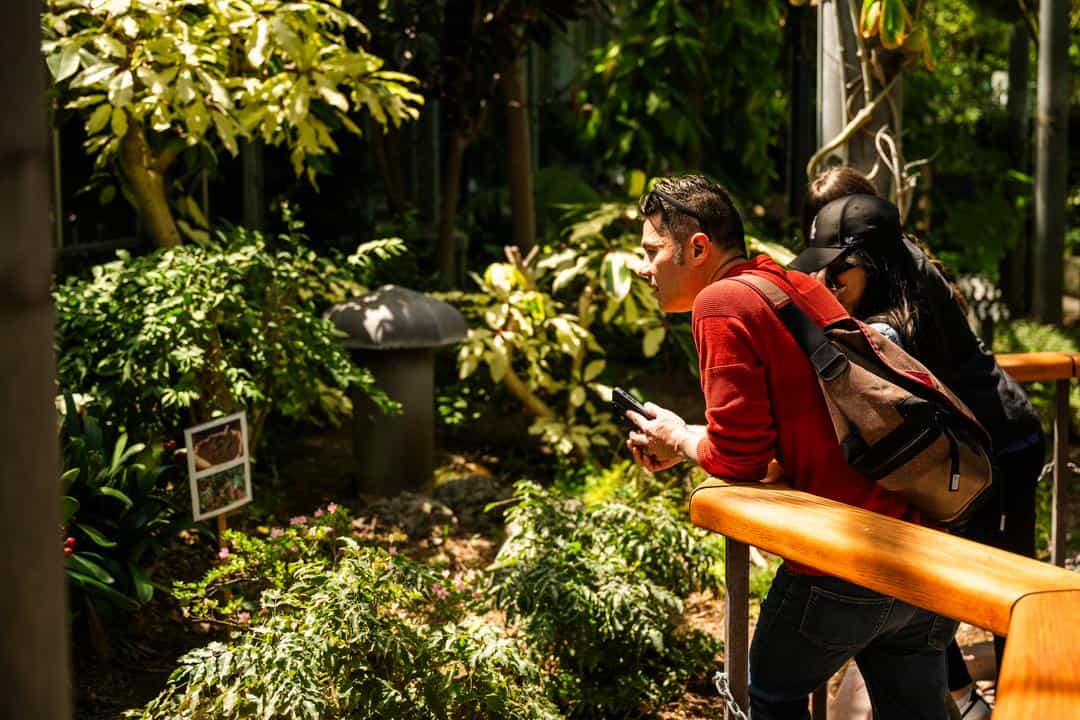

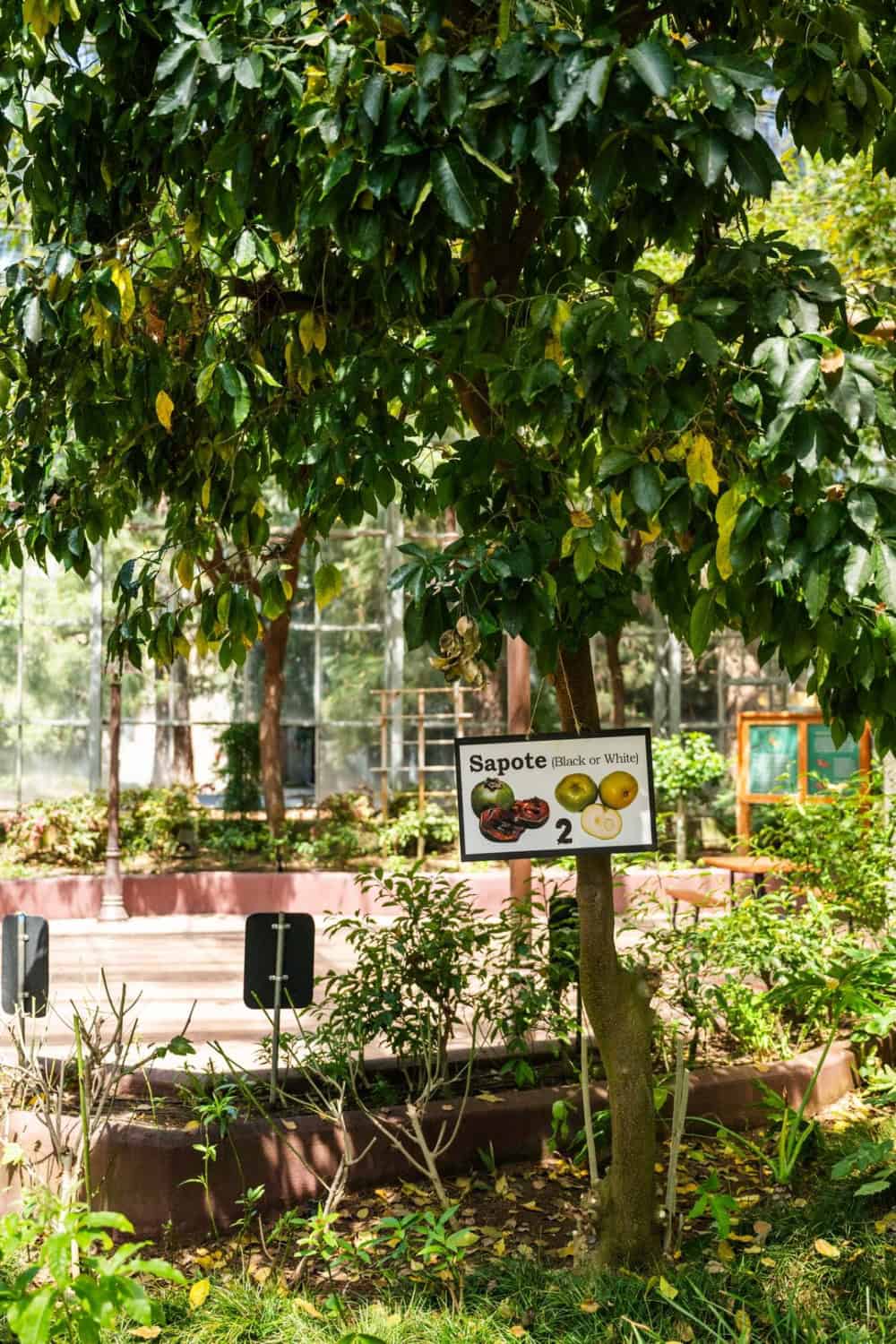

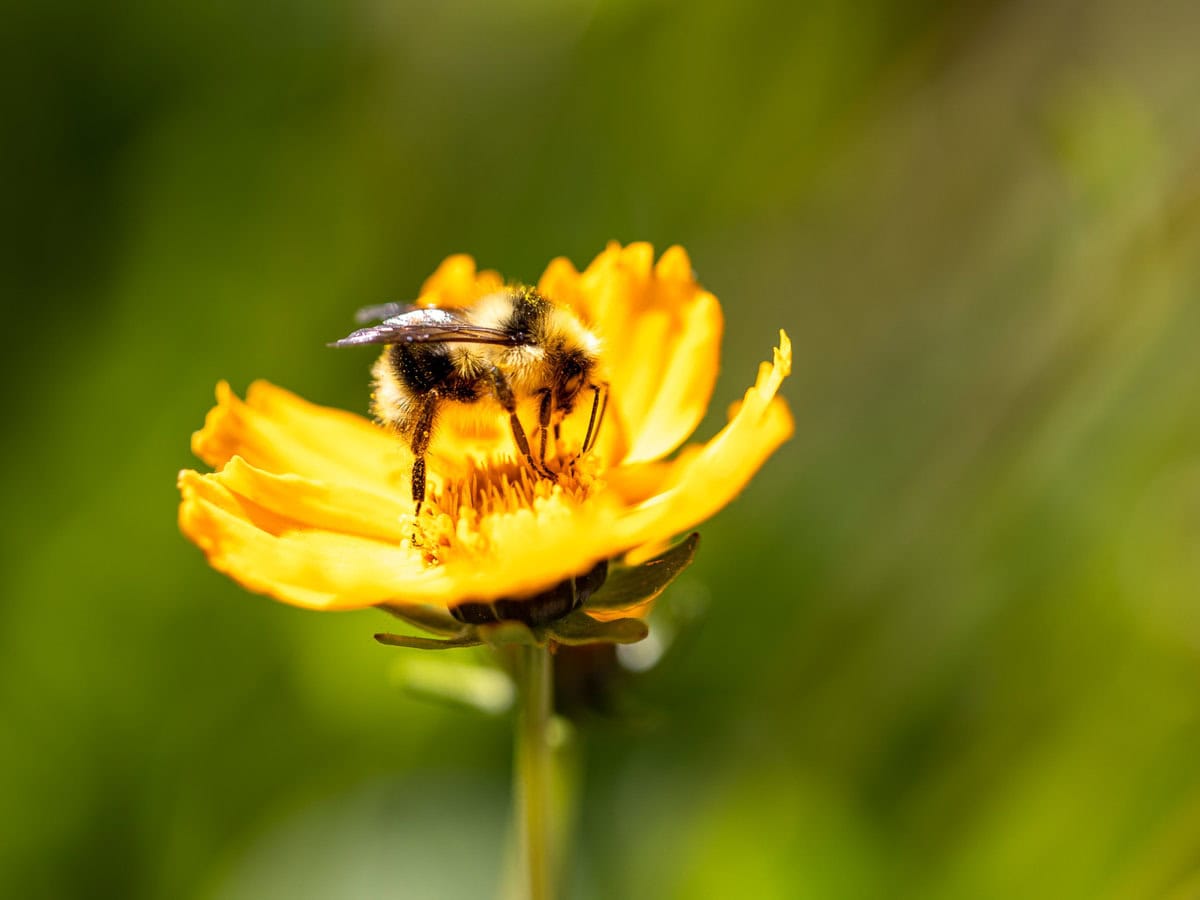
Beautiful and Beneficial:
Outside of Gilroy Gardens, many farmers plant pollinator gardens to increase biodiversity and plant productivity. Many fruits and vegetables depend on pollinators (primarily bees rather than Monarchs) to pollinate their crops. Pollinator gardens can also help to control unwanted insects naturally, without the use of pesticides.
How to plant a pollinator garden at home:
Has the Monarch Garden at Gilroy Gardens inspired you to plant your own pollinator garden? It’s easier than you think. Work with your local nursery or a trusted online source, like Annie’s Annuals, to determine which butterfly-friendly plants will work in your particular zone.


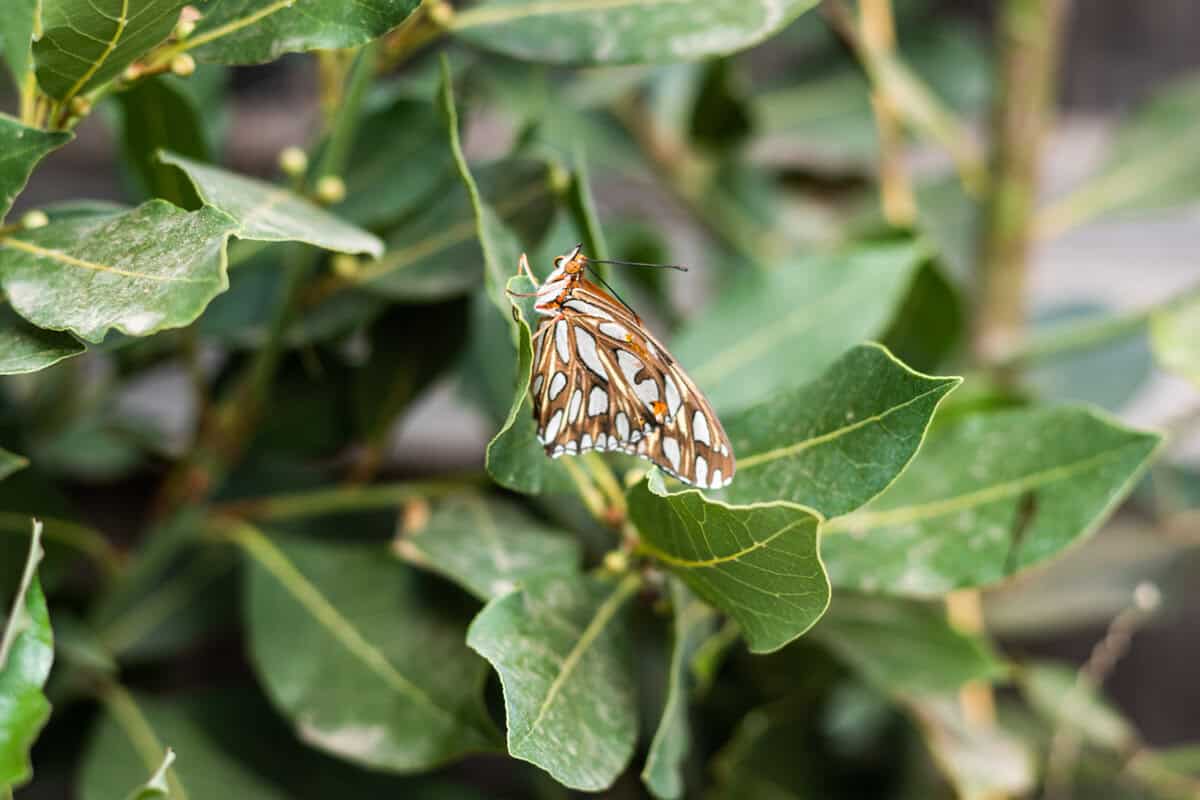
Water, water everywhere: Sustainable water use at Gilroy Gardens
Water-conscious Californians surrounded by colorful, lush landscaping at Gilroy Gardens might wonder how much water it takes to sustain the gorgeous gardens and water features. Like all California farmers, Gilroy Gardens is committed to responsible water usage. All of the water needed to sustain Gilroy Gardens is sourced from a private reservoir in the hills.
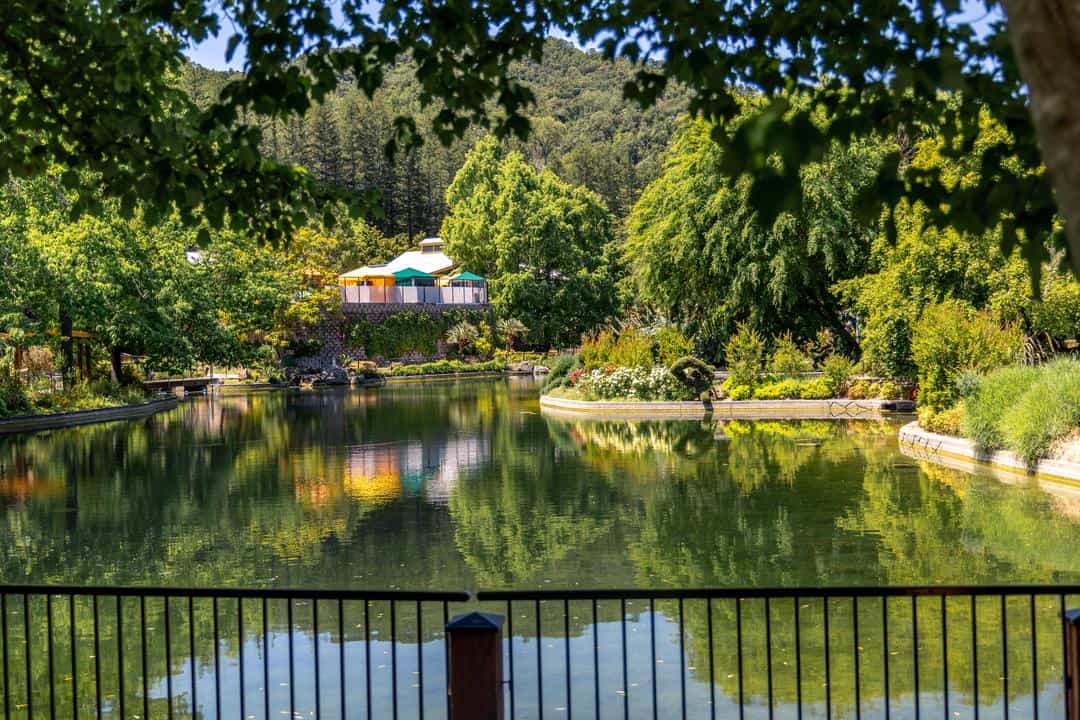
Additionally, the water is recirculated through the park’s many waterfalls, stored in an onsite lagoon, and used to irrigate the gardens and landscaping. Bonus: the water from the lagoon is rich in nitrogen and phosphorous, which serves as a natural fertilizer for the flowers and trees throughout the park.
How to visit Gilroy Gardens
Gilroy Gardens should be on everyone’s California bucket list – whether you’re a home gardener looking for inspiration, someone looking for a fun agritourism destination, or a parent searching for a more educational alternative to traditional theme parks. In our humble opinion, it truly is the most thrilling way to learn more about the importance of California agriculture, specifically the fruits and vegetables of the Santa Cruz and San Benito regions are famous for.
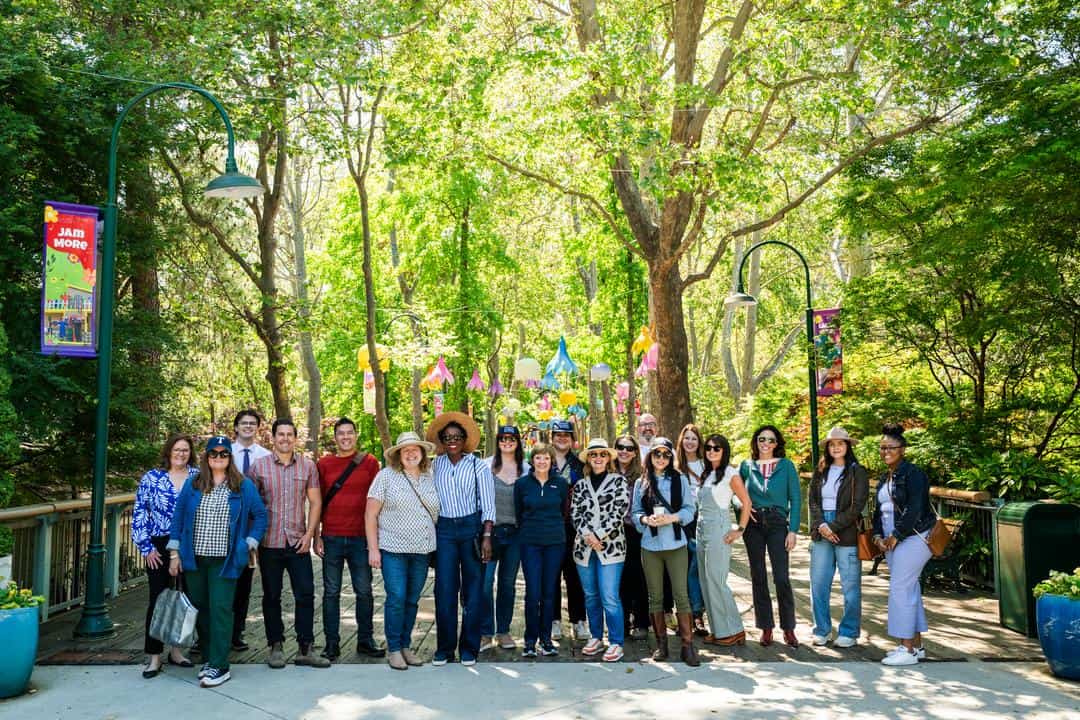
The park is open daily from June 7th to August 10th, and on weekends throughout the rest of the year. Check the website for the latest updates.
FAQ about Gilroy Gardens:
Even the park’s menu is peppered with regional treats. Since you’re visiting the Garlic Capital of the World, you obviously should try the garlic fries, the garlic funnel cake or the garlicky artichoke pizza! Need a drink? Adults can choose from a selection of local wines.
No matter what time of year you visit, there’s always something exciting happening at Gilroy Gardens. During the summer months, the water park is a great way to beat the heat. During the holiday season, you’ll find elaborate decorations and special events!
Gilroy Gardens hosts unforgettable field trips (with age-appropriate curriculum), corporate outings and group events!
Article by Hilary Rance. Photography by Hilary Rance and James Collier.

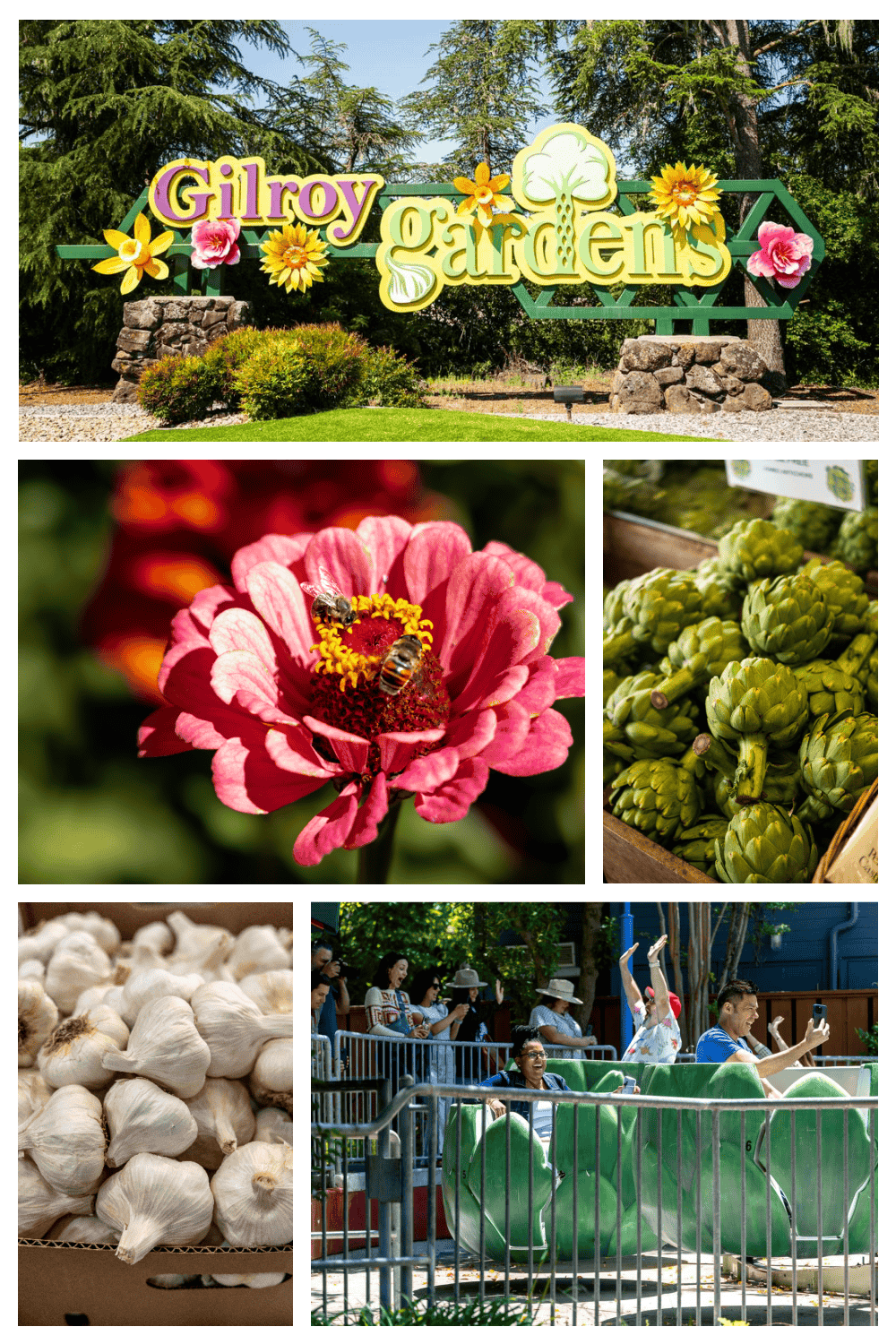
Gilroy Gardens is truly a hidden gem that offers so much more than just a beautiful garden experience. This article highlights the unique blend of horticultural beauty and family-friendly fun that makes Gilroy Gardens a must-visit destination. From its lush landscapes to the iconic garden attractions, it’s clear that the park offers a peaceful retreat for nature lovers, while also providing engaging activities for all ages. The focus on the park’s commitment to sustainability and education further underscores its value to the community. It’s wonderful to see such an enchanting space that celebrates both nature and learning—definitely a place worth exploring!